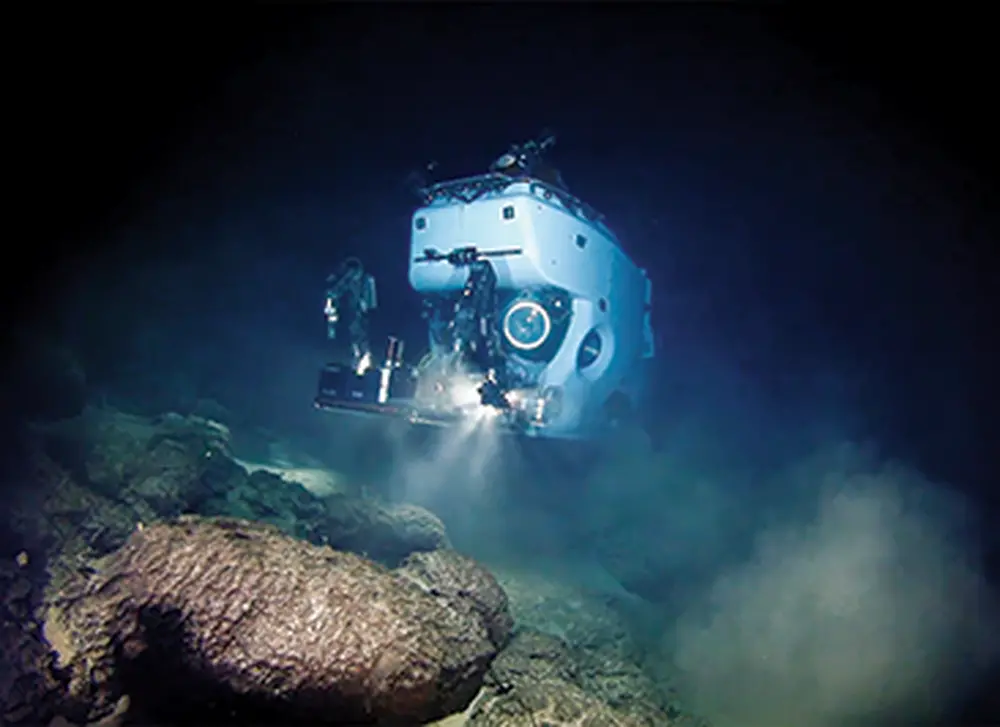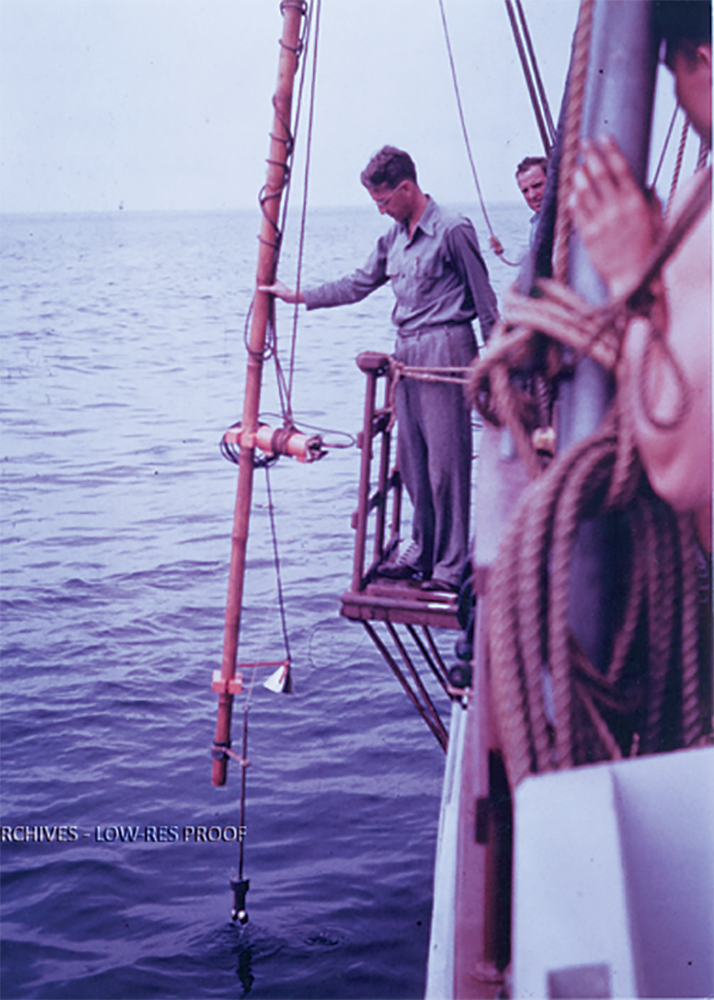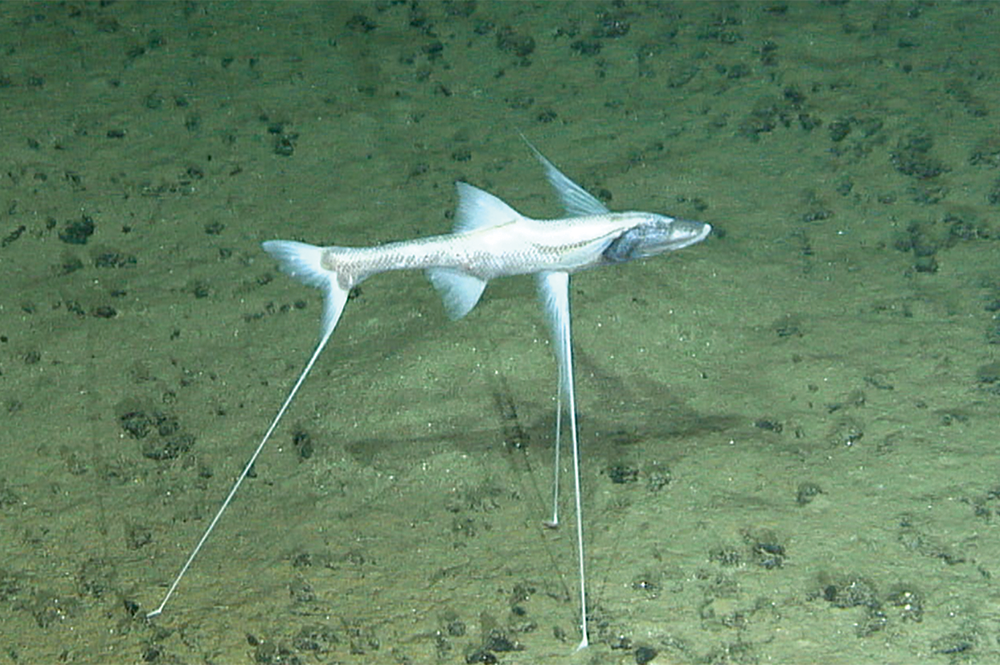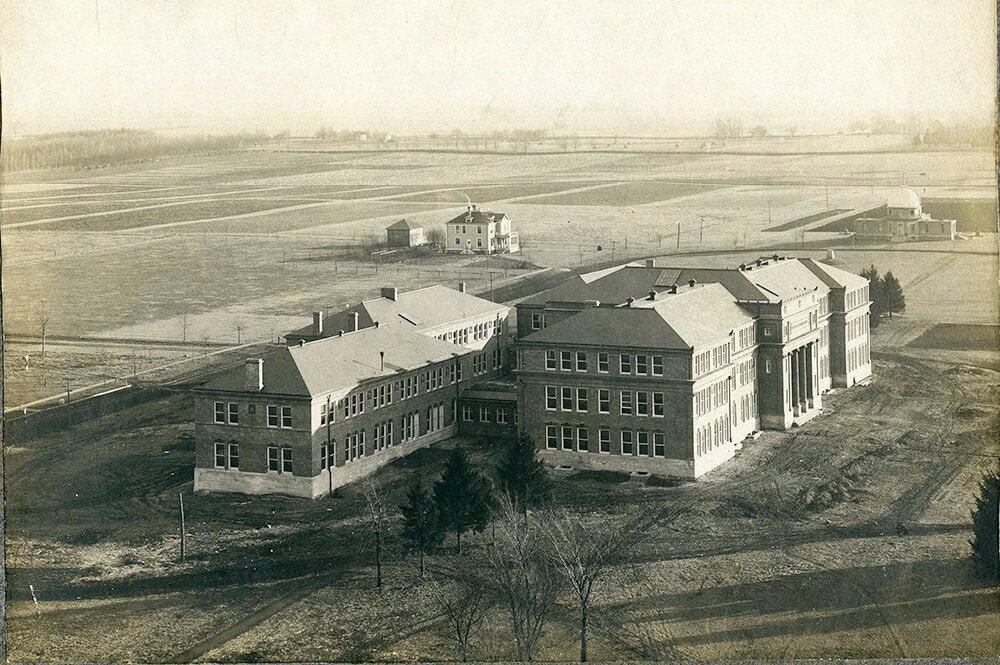

For most of history, the 70 percent of our planet’s surface that hides below the ocean surface have been a mystery, too deep for humans to observe and understand. A century ago scientists knew more about the surface of the Moon than the bottom of the ocean.
Modern science has since allowed us to explore the ocean’s depths, however, and beside the discoveries themselves, one of the biggest surprises about marine geology—the study of the ocean floor—is how much of it began at the land-locked University of Illinois.
In fact, Francis Parker Shepard, known as the “Father of Marine Geology,” spent much of the early part of his career (1922-1936) teaching and researching at Illinois. He joined Illinois as an instructor specializing in the Rocky Mountains, but soon he transitioned to studying the ocean floor.
“I am often asked how I got into the study of the geology of the oceans, living as I did in Illinois,” Shepard wrote in his autobiography. “My development of this new field was due to a series of accidents or coincidences.”
It started during summer 1923, when Shepard’s wife, Elizabeth, was pregnant and unable to accompany him to study the Rockies. Therefore, instead of heading west, the couple spent the summer in Massachusetts, where Shepard used his father’s yacht to satisfy his curiosity about coastal Atlantic regions that he’d read about in research papers.
Using the yacht along with a reel and some small, weighted sampling devices, Shepard examined sediment that he drew up from the ocean floor. What he found was contrary to what he’d learned in geology courses.

“We were told that sand is found along the shores and this, in turn, is replaced by finer sediments outside, and only mud occurs on the outer continental shelf,” Shepard wrote. “This is not what I found at all. Mud often occurred right near the shore and was replaced by sand in deeper water outside; then sometimes gravel still farther out.”
Intrigued—and with help from a grant from Illinois to obtain nautical charts from around the world—Shepard refocused his career to study the ocean floor, and this work at Illinois helped him reshape what we knew about this hidden realm.
“One of the things he’s best known for is the discovery of submarine canyons,” said Steve Marshak, professor emeritus of geology and former director of the School of Earth, Society, and Environment at Illinois. “These canyons cut into the continental shelf and provide a conduit in which sediment from nearer the shore can be carried out to the deeper parts of the sea.”
Shepard’s research at Illinois helped him later develop his theory that the near-shore parts of submarine canyons were formed from running water and rivers and erosion during the Pleistocene Epoch (between about 12,000 and 2.6 million years ago) when the sea level was much lower. In later years, he also recognized that erosion in the deeper reaches of these canyons was the result of turbidity currents, or “underwater avalanches” in which clouds of sediment rushed down slope and carved into the sea floor. Shepard’s findings are now the standard scientific explanation for submarine canyon formation.
Shepard’s new knowledge of submarine canyons helped the U.S. Navy fight German submarines during World War II. By then, Shepard had left Illinois for a successful career at the Scripps Institute of Oceanography. He passed away in 1985, but today the Francis P. Shepard Medal for Marine Geology is considered one of the most prestigious awards in the field.
Two graduate students who studied with Shepard at Illinois are also regarded as pioneers in marine geology. According to some accounts, once Robert S. Dietz and Kenneth O. Emery completed their degrees, they hitchhiked and traveled via boxcar to meet Shepard at the Scripps Institute in California to assist in Shepard’s research. Then they moved on to make their own discoveries.
Dietz is best known for his contributions to the theory of plate tectonics, the grand-unifying theory of geology, which modern geologists use to explain continental drift, volcanism, mountain building, and earthquakes. He coined the term “seafloor spreading,” for the process by which new ocean floor forms.

Dietz also made significant contributions to meteorite impact theory. He is credited with recognizing a number of huge, ancient impact craters on Earth, including the Sudbury Basin in Canada.
Meanwhile, Emery made a name for himself studying the Pacific and Atlantic Oceans. He served on the U.S. Geological Survey team based in Los Angeles from 1946 to 1960, studying the effects of nuclear testing in the Marshall Islands on the Bikini Atoll. Emery’s studies confirmed a hypothesis by Charles Darwin that atolls consist of coral reefs atop the rims of extinct volcanoes that have slowly been sinking below sea level.
Emery also served two years as oceanographer at the Navy Ordnance Test Center. He published 290 articles or monographs and 15 books and also researched acoustic submarine warfare.
In recent decades, geoscientists associated with Illinois continue to have strong influence in what we learn about the oceans. Margaret Leinen (BS, ’69, geology) is director of the Scripps Institution of Oceanography. Prior to that, Leinen served as the vice provost for marine and environmental programs at the University of Rhode Island and assistant director of National Science Foundation.
Leinen also served as the president of the American Geophysical Union, a position once held by Illinois President Tim Killeen. Similarly, Susan Avery (PhD, ’78, atmospheric sciences) acted as president of the Woods Hole Oceanographic Institution, meaning that for a while Illinois alumni were in charge of two of the world’s most prominent oceanographic research institutions.
Research of the ocean floor continues on campus. Patricia Gregg, professor of geology, was recently chief scientist of a National Science Foundation-funded expedition to the floor of the Pacific Ocean on the unique submersible vessel Alvin. The journey allowed Gregg and her students to study never-seen underwater volcanoes 750 miles west of Mexico so as to better understand how new seafloor is created.
And, Gary Parker, the W.H. Johnson Professor of Geology, was recently elected to the National Academy of Sciences for his work on the fluid dynamics of sediment-transporting currents, and today is considered to be the world’s leading authority on turbidity currents.
Editor's note: This story first appeared in the Fall 2018 LAS News magazine.


